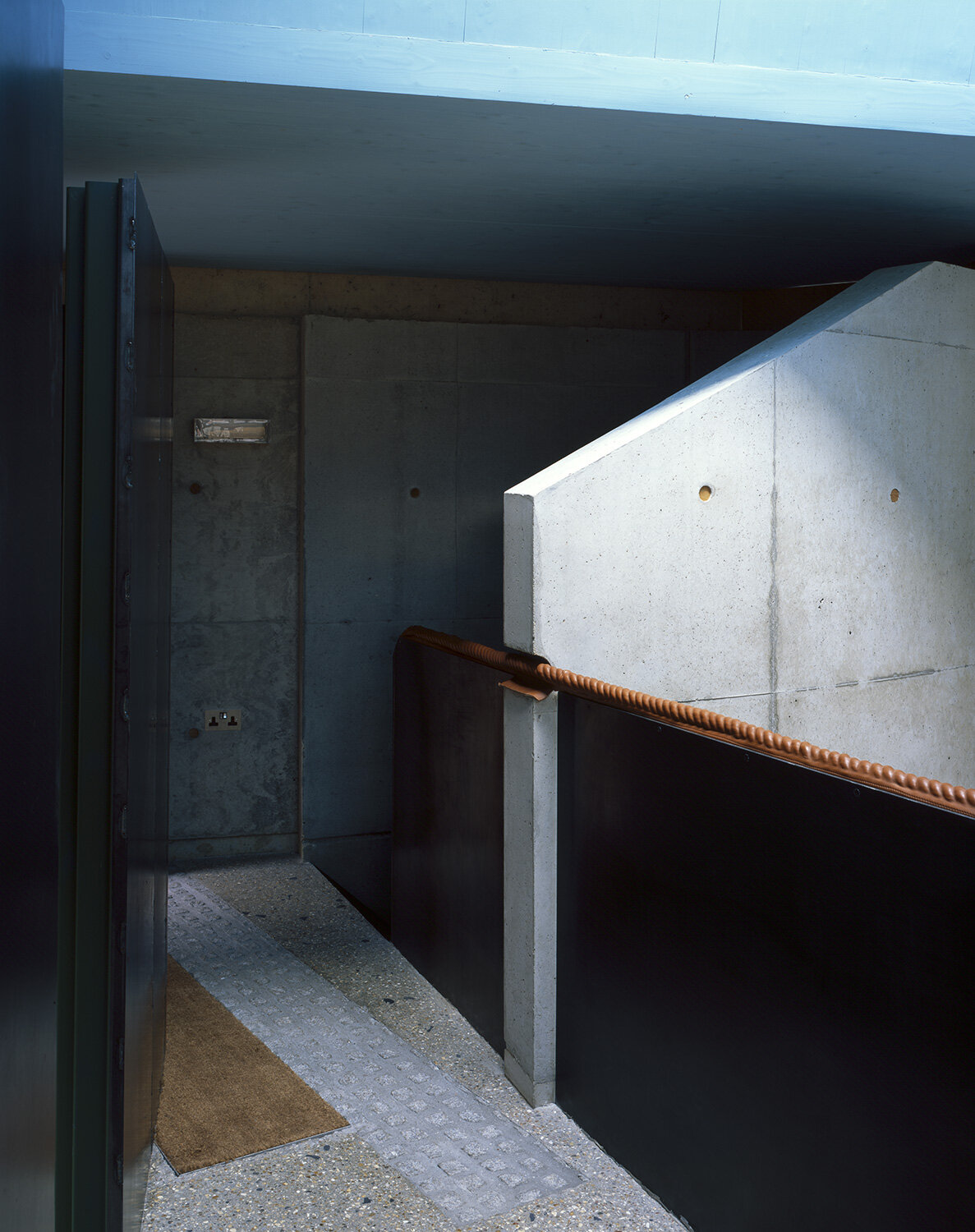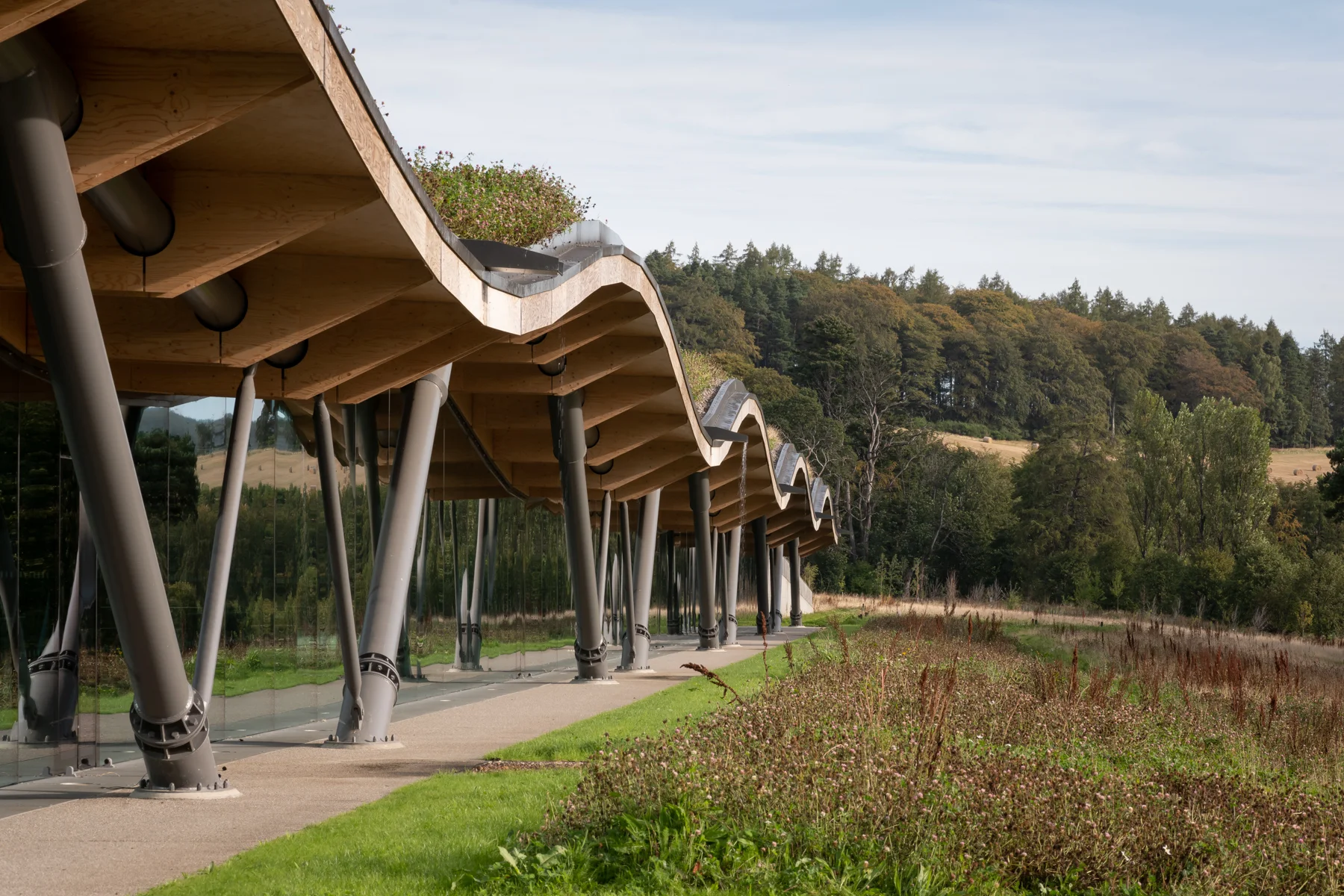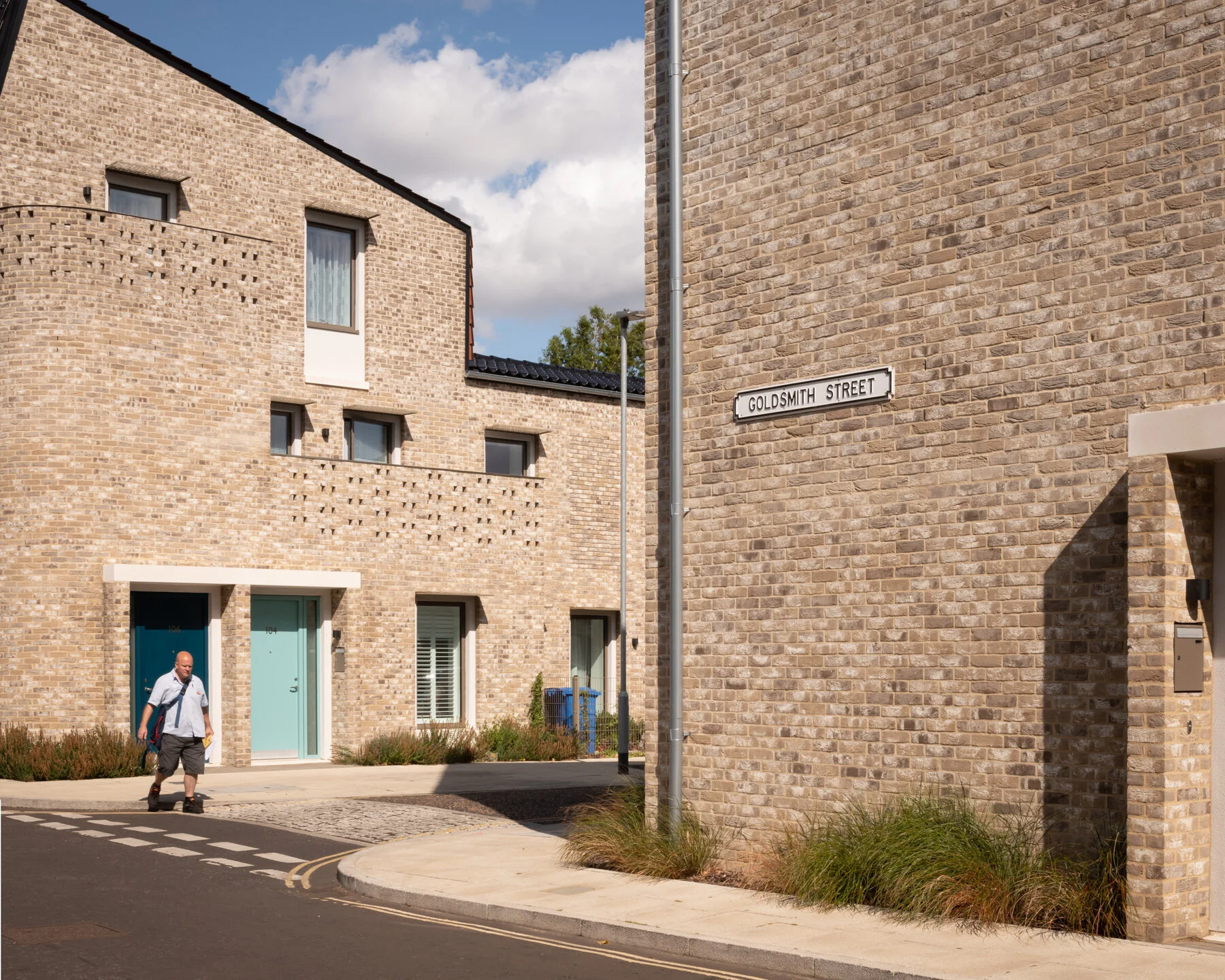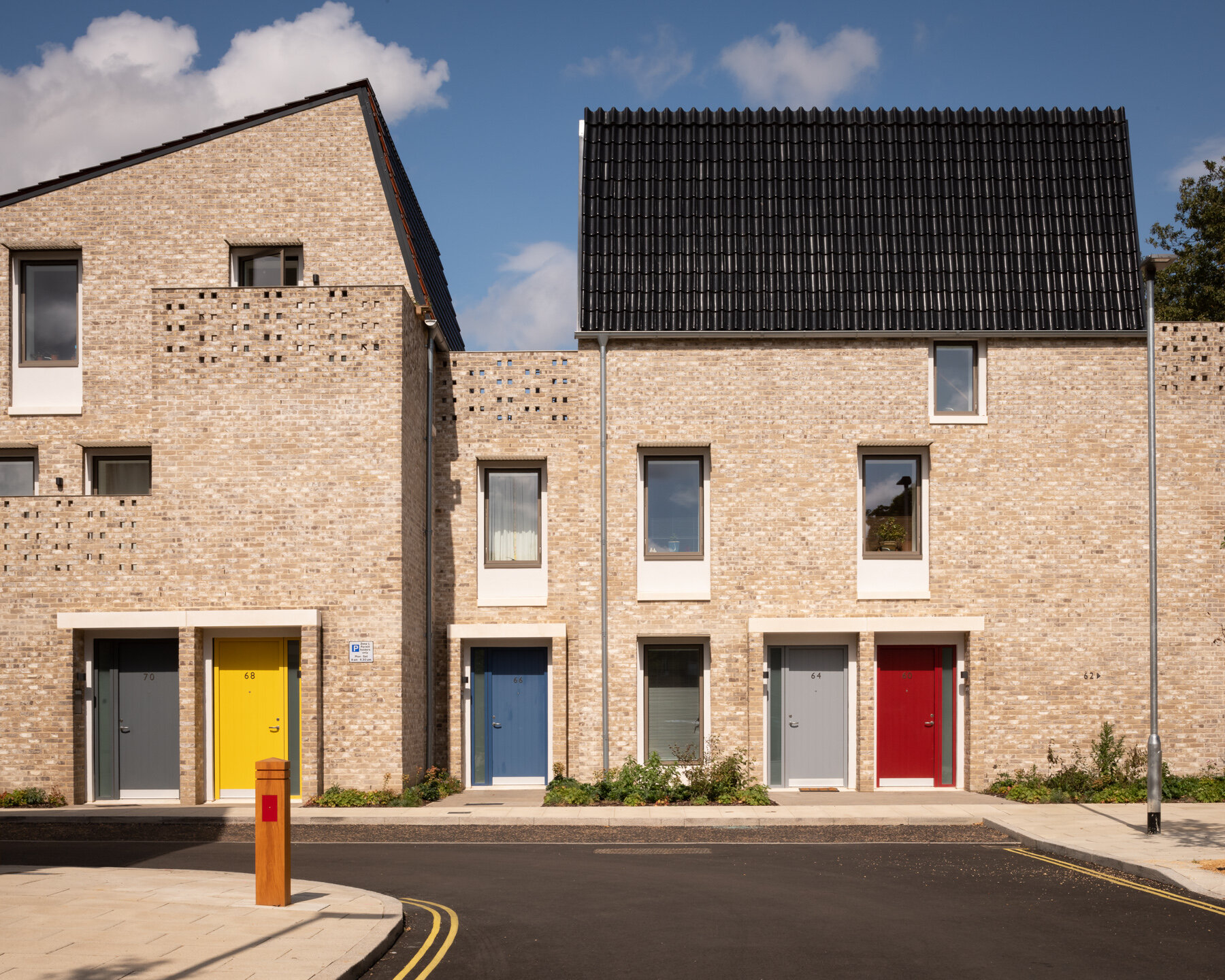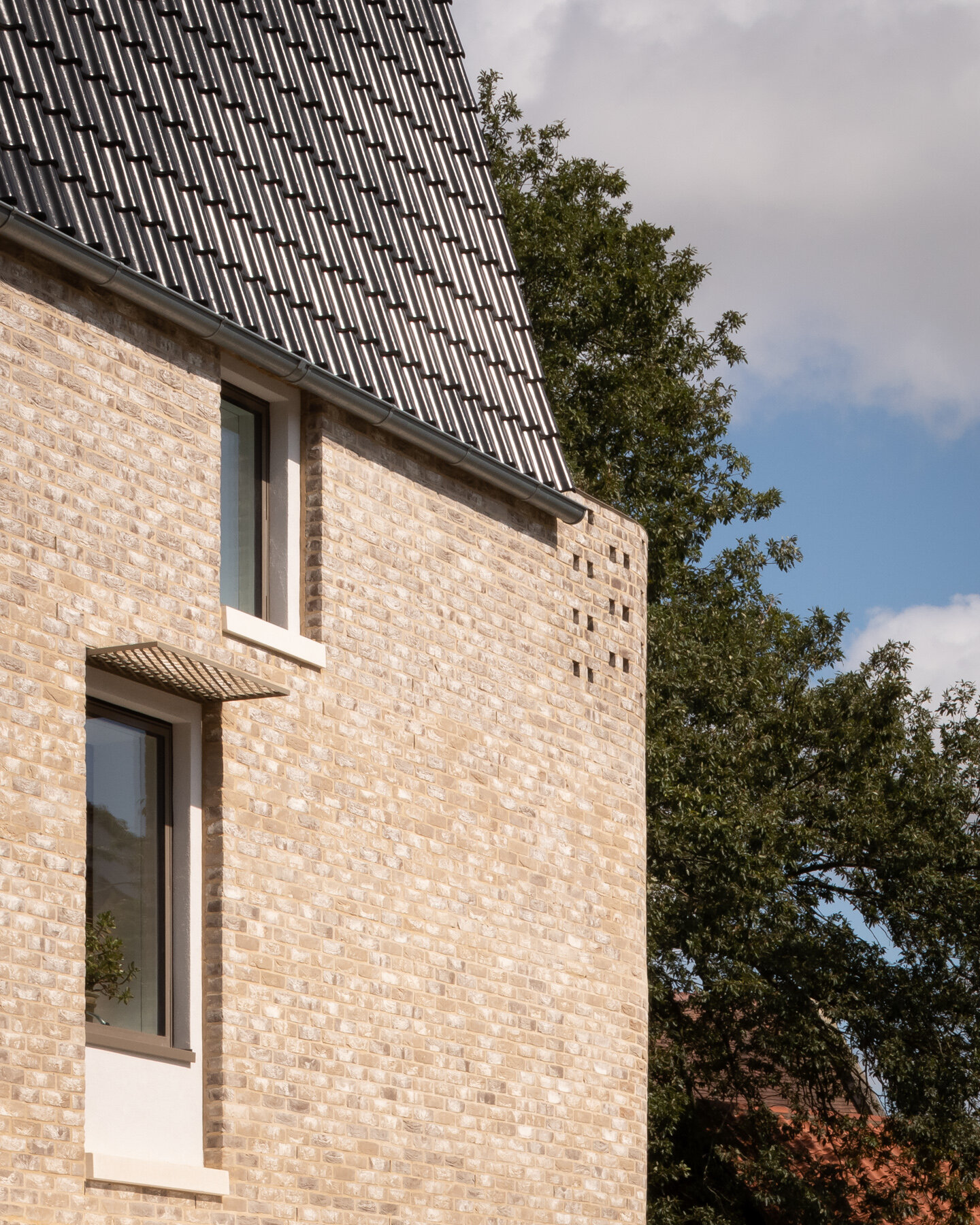A new film with Jim Stephenson. Piers Taylor in conversation with Sarah Wigglesworth. Coming soon. A lovely project to end the year on.
Room Tones Purple and interview
“What if some mornings I got up and set up a self-generating patch on the Buchla?”
I had a conversation with Mat Smith about the Room Tones series and how letting go created the space for some creativity and solace during anxious times. Read the interview on the Gated Canal website here
The Room Tones series is available to download at my Bandcamp site here.
Room Tones: Yellow
A new 2hr extract recording of some electronic tones that have been filling my room. Room Tones: Yellow is now available.
Self generating notes come and go, sometimes spacious, sometimes busy. This 2hr recording will fill your room with colour.
Not having much time to make music has led me to setting up self generating synthesizer patches that play in my room throughout the day as I'm working. Occasionally I will lean over and change a setting, sometimes I might even get more involved, but mainly these are gentle machine music. Drones, flurries of notes and the beautiful harmonies created by chance mean this recording never repeats itself. You can get lost in it, which I've been enjoying doing.
All proceeds to Chestnut Tree House Charity.
Room Tones
I’ve been so busy on other projects over the last 5-6 weeks that music has had to take a back seat. But amongst all the turmoil I have made time in the mornings to program simple self generating patches on my Buchla synthesizer, that bubble away in the background throughout the day. Occasionally I will lean over and change a setting, and sometimes I will get more involved, until work pulls me away again. I’ve recorded some extracts of these and have been listening back to them on my daily walks along the beach. There is something soothing in their simplicity. I’ve enjoyed sharing my space with them, whether in my studio (where I seem to spend far too much time at the moment) or in my head via headphones. I thought other people might also enjoy these gentle minimal soundscapes, so I’ve made the first of them available on my Bandcamp, with 100% of the proceeds going to the Chestnut Tree House charity. You can listen and buy here. I’ll probably make a new one available every week.
Thanks to Stanley James Press for the cool design.
Practice
All too often we are told that everyone is starved for time. So if you work in any kind of creative field that is time based (durational such as film, TV, video, audio) the mantra is often “shorter, quicker, tighter, can we get it down to 3 minutes?!” This can often mean that every video is cut like a music video, or that stories are told badly, with the desire for short duration more important than honouring the focus of that story.
When I was approached to work on a film that offered the opposite of this, I (slowly) jumped at the chance.
You can now watch that film by Jim Stephenson and Laura Mark that takes a slow mediative look at Piers Taylor and Invisible Studio. Creating the soundtrack was an exercise in restraint, leaving space for the natural sounds around Piers’ work spaces and enhancing the lingering shots captured by Jim. I hope I managed to capture some of the philosophy around Piers Taylor’s work too. The simplicity and sketch like quality stood out for me and was something I tried to portray through the use of subtle treatments and simple, sometimes glacial paced movement.
There is a Kickstarter currently active to fund further films in this series. Jim and Laura are keen to involve me at an earlier stage in future films, bringing together the process of capturing location sound and the creation of the soundtrack. That is something I’m particularly excited about, blurring the lines between the two.
Practice - Episode 1 on Piers Taylor coming soon
A new film from Jim Stephenson and Laura Mark that I composed the music for and mixed. Find out more about the film and how you can support future films, here.
I’ll share more on the process of making the soundtrack soon.
“Coming soon, the first episode of PRACTICE, a new series of architecture documentaries that focus on the way architects work, rather than the work they produce.
The first episode looks at Piers Taylor / Invisible Studio. We follow Piers for a year as he builds a new project in the woods surrounding his home.
We are currently trying to raise money to make future episodes for Practice and we have set up a Kickstarter with some great Rewards for anyone who would like to back us...”
Hidden Sounds of Architecture
Contact microphones and electromagnetic microphones allow us to tap in to a world of sonics that are normally hidden from our human hearing. The exploration of these sounds has been fascinating and exciting for me - the potential to discover something new and unheard, a secret sound dimension full of new possibilities, gives me great pleasure and the opportunity to listen to the world from a different perspective.
Photo by Jim Stephenson
“What those contact mics are so good at is picking up much lower frequencies that we don’t hear generally. At London Bridge there were two particular sounds that I was drawn to. One of them is the handrails of the escalator. It was just completely unexpected. You have a vague idea of what something’s going to sound like, but when I connected the contact mics to the left and the right handrails, which was a challenge in itself because you have to stick them to the surface and the escalators are moving so you have limited time, it sounded like a UFO. It’s just this weird sort of sound. Those are the moments that I love about working with those sort of non-traditional microphones.”
In 2019 I travelled around the UK with film maker Jim Stephenson, making films about each of the Stirling Architecture Prize nominees. You can see those films, which focus on the architectural process, here. During that project I had the opportunity to use contact and electromagnetic microphones to capture the sounds from two of the nominated buildings, The Macallan Distillery designed by Rogers Stirk Harbour + Partners, and London Bridge Station designed by Grimshaw, and together with Jim, create these new films which focus on the sounds I discovered.
I also chatted with Jim about the recordings and process, the text of which you can find on his blog.
I have also put together a download album featuring the two soundtracks plus additional recordings from both locations. Find it here.
Headphones recommended to hear the full frequency range of the recordings.
“The production of whisky is industrial, all those sounds that were coming from distillery – it felt like the machine was alive, it felt like it was belching out these sounds. When you listen closely there’s a rhythm to it, and there’s different textures, and these noises start to come alive and have a sort of distinct character all to themselves”
Friction in House 2 - Walmer Yard Sound Portrait
This sound exploration of Walmer Yard House 2 begins with the sound of a wooden door scraping against the rough concrete floor, the two materials crackling and scratching against each other in ear-pleasing sonic friction.
It was the first sound I recorded during my two days exploring the building, stopping me in my tracks when I first heard it, my brain taking a moment to calculate where it was emanating from. The only door in Walmer Yard to make a sound as it opens and closes (rather than gliding smoothly), in some buildings this would be considered a flaw. Knowing some of the philosophy behind Walmer Yard, I like to think it was a design choice, a sonic reminder, more subtle than the huge metal staircases that boom and oscillate with every footstep, of the materials that make up this fascinating, mysterious, sometimes disorientating collection of houses.
Those materials are explored further in this piece using contact microphones, which uncover hidden resonances in physical objects such as metal light fixtures, handrails and staircases. Miniature microphones are used to discover new angles and extreme close-ups of sound, getting into positions that larger traditional microphones might now allow.
My presence in the space is rarely heard. As a performer I'm activating some of the materials, using beaters, brushes and cello bow, but like most sound recordists, I've developed the stillness to avoid imposing my physical self on recordings. Even the smallest movement, shuffle of feet or poorly timed breath will be picked up by the microphone.
In contrast, my felt sense of the space, the 'how does it make me feel?', is present and informs the composition and treatment of the original recordings.
Photo by Helene Binet.
Thanks to Laura Mark for inviting me to take part in the Lesser Senses series of events.
Walmer Yard - Assemblage: The Lesser Senses
I’ll be presenting a new architectural sound piece at Assemblage: The Lesser Senses, held at Walmer Yard on Saturday 26th October.
Named an assemblage to reflect the gathering of many different speakers, participants and formats taking place during the day, this event will launch the new season at Walmer Yard and will take the form of a series of encounters and events held across the homes and centred around the theme of the Lesser Senses.
Photography Héléne Binet
As well as presenting my own work exploring sound, space and architecture, I’m looking forward to immersing myself in deep exploration of the senses.
Following a key note presentation in Walmer Yard’s ‘coats-on lecture theatre’ by neuroscientist Danny Ball, a series of workshops, smaller talks, performances and film screenings will take place across the four houses, exploring how our senses affect our perception of architecture.
Guests will be encouraged to explore the homes throughout the afternoon while the interventions happen in tandem across the spaces. These include screenings of a new short film by Jim Stephenson on the sensory experience of Walmer Yard, a sound piece by Simon James, and spatial listening workshops led by Alex de Little.
Photography Héléne Binet
My sound piece, created using the sounds I gathered over two days at Walmer Yard, has become quite an intense work, mixing contact microphone recordings of the various materials and bowed light fixtures transformed via granular sampling. I often find myself in this headspace where I strive to stay true to the natural sounds as recorded, whilst inserting something of myself and my experience in a space. Often going back and forth over how much treatment should be used. It is a difficult balancing act but In this instance I think my time alone at Walmer Yard has left me with a feeling of the sparseness and the futuristic nature of the structures, which has definitely informed my creative decisions.
For what it’s worth these are my notes on the work so far, which might change before the weekend.
This sound collage of Walmer Yard House 2 begins with the sound of a wooden door scraping against the rough concrete floor, the two materials crackling and scratching against each other in ear-pleasing sonic friction.
It was the first sound I recorded during my two days exploring the building, literally stopping me in my tracks when I first heard it, my brain taking a moment to calculate where it was emanating from. The only door in Walmer Yard to make a sound as it opens and closes (rather than gliding smoothly), in some buildings this would be considered a flaw. Knowing some of the philosophy behind Walmer Yard, I like to think it was a design choice, another sonic reminder, more subtle than the huge metal staircases that boom and oscillate with every footstep, of the materials that make up this fascinating, mysterious, sometimes disorientating collection of houses.
Those materials are explored further in this piece using traditional, miniature and contact microphones, the latter uncovering hidden resonances in physical objects, and a selection of activators (cello bow, beaters and brushes).
Use discount code - Assemblagespeakers for 25% off ticket prices. Get them here.
Photography Héléne Binet
Nevill Holt - Riba Stirling Architecture Prize
The fifth of Jim Stephenson’s Architects’ Journal/Riba Stirling Prize nominee films looks at the Nevill Holt Opera House, designed by Witherford Watson Mann.
Photograph by Jim Stephenson
The Riba Stirling Architecture Prize winner is announced on the 8th of October. Find out more here.
Macallan Distillery - Riba Stirling Architecture Prize
The fourth of Jim Stephenson’s Architects’ Journal/Riba Stirling Prize nominee films looks at the Macallan Distillery in Scotland, designed by Rogers Stirk Harbour + Partners.
Nestled in the hills near the River Spey, the Macallan Distillery looks a bit like a Bond villain’s lair. On the outside the shape of the undulating 100m long roof resembles the rolling hilly landscape that surrounds the structure. On the inside, high tech industrial equipment, lit dramatically, produces premium whisky, with one bottle in particular costing over £500,000.
Tuning in to the production process using contact microphones, I uncovered a hidden world of sound. The hiss and pressure of the stills and pipes, deep industrial drones and wind ‘playing’ the structure itself.
Photograph by Jim Stephenson
Of all the Stirling Prize nominees, this was the richest for the senses. The contrast of the internal industrial sounds and the external natural sounds, the strong, sometimes overpowering smell of whisky, and inside the production area, the stifling heat, made for a challenging, but ultimately rewarding recording and filming environment.
There will be an alternate version to showcase the hidden sounds picked up by contact microphones coming soon.
The Riba Stirling Architecture Prize winner is announced on the 8th of October. Find out more here.
London Bridge Station - Riba Stirling Architecture Prize
The third of Jim Stephenson’s Architects’ Journal/Riba Stirling Prize nominee films looks at London Bridge Station, designed by Grimshaw Architects.
As well as the recognisable sounds of a busy station in a major city, I was able to record the hidden sounds using contact microphones to pick up the deep rumble of the escalator mechanics and the other worldly friction of the escalator handrails, and electromagnetic microphones to uncover the wealth of electronic waves pulsing through the station. These sounds don’t make it in to the main film (apart from the escalator rumble), but an alternative version with these as the focus, is planned.
Photograph by Jim Stephenson
The Riba Stirling Architecture Prize winner is announced on the 8th of October. Find out more here.
Goldsmith Street - Riba Stirling Architecture Prize
In the second of Jim Stephenson’s films for The Architects’ Journal, we visit Goldsmith Street in Norwich, the first council housing project to be nominated for a Stirling Prize. UPDATE: I’m really pleased to say that Goldsmith Street won the Riba Stirling Prize, the first council housing project to do so. Proving that well designed, climate friendly social housing is possible. I hope this is the beginning of a shift towards more projects like this.
These environmentally friendly passivhaus-standard terraced houses were designed by Mikhail Riches and Cathy Hawley.
Photographs by Jim Stephenson
Max de Wardener - Kolmar LP
I had the pleasure of programming and performing Buchla synthesizer on Max De Wardener’s forthcoming album on Village Green Recordings. Released on the 27th September.
The Buchla 200e Electric Music Box has been my main instrument for over 5 years, but Max drove me to find many new sounds and approaches to create distinct tones to match the Ondes Martenot playing of Thomas Bloch and percussion of Moses Boyd. The six sessions were inspiring and I learnt a lot about space and my own approach to music. In fact Max inspired and encouraged me to release the Space No Space material.
Buchla Electric Music Box photograph by Dominic Goodman.
The Cork House - Riba Stirling Architecture Prize
The first of Jim Stephenson’s Architects’ Journal/Riba Stirling Prize nominee films explores The Cork House, designed by Matthew Barnett Howland with Dido Milne and Oliver Wilton.
Sometimes you enter a space and struggle to hear any sound that might be worth recording. The Cork House was one such space, the density of the building’s material creating a warm cocoon, shut off from the nearby sounds of Eton and the Heathrow bound aircraft passing every few minutes. These situations require a stillness physically and of the mind, to begin to pick out what is present.
Photograph by Jim Stephenson
The beautiful garden offered a rich setting and opportunities for sound recording that provided a contrast with the stillness inside. I also used contact microphones inserted in spaces between the cork bricks to capture the sounds of the cork itself. These creaks and squeaking are used sparingly within the film.
The Riba Stirling Architecture Prize winner is announced on the 8th of October. Find out more here.
Walmer Yard - Assemblage: The Lesser Senses
I’ll be presenting spacious sound recordings at Assemblage: The Lesser Senses event held at Walmer Yard on the 26th of October.
Photograph by Hélène Binet
“Named an assemblage to reflect the gathering of many different speakers, participants and formats taking place during the day, this event will launch the new season at Walmer Yard and will take the form of a series of encounters and events held across the homes and centred around the theme of the Lesser Senses.
Following a key note presentation in Walmer Yard’s ‘coats-on lecture theatre’ by neuroscientist Danny Ball, a series of workshops, smaller talks, performances and film screenings will take place across the four houses, exploring how our senses affect our perception of architecture.
Guests will be encouraged to explore the homes throughout the afternoon while the interventions happen in tandem across the spaces. These include screenings of a new short film by Jim Stephenson on the sensory experience of Walmer Yard, a sound piece by Simon James, and spatial listening workshops led by Alex de Little.
Performances developed by designer and creative technologist Ava Aghakouchak will explore the synesthetic experience of Walmer Yard using an active wearable called ‘Sovar’. The tactile-visual amplifier aims to raise the wearer’s attention towards the more unnoticeable qualities of a space and help deepen their sense of presence within it.
Across the bedrooms Gonzalo Herrero Delicado, architecture curator at the Royal Academy of Arts, will host a series of conversations with artists, scientists and architects. While in the kitchens, conversations around the dinner tables with architects Alan Dunlop and Niall McLaughlin will discuss how we design for those with different sensory needs.
The day will conclude with a panel discussion and a drinks.”
Get your tickets here.
Stirling Architecture Prize Films
Over the last couple of months I’ve been travelling around the UK with film maker and photographer Jim Stephenson, making films for The Architects’ Journal to showcase each of the Stirling Architecture Prize nominees for 2019. The films are beautifully shot by Jim, with a slowly paced edit allowing the eyes to take in the detail of each design. I like Jim’s spacious approach, and whilst the focus of the films themselves isn’t sound, Jim welcomed my attention to picking out the detail and richness of the structures and the added dimension of using unusual recording techniques such as contact microphones that pick up vibrations in materials, and electromagnetic microphones that pick up the hidden electronic signals normally hidden from our ears.
Space No Space - A new cassette album
These pieces of music developed over a period of months and existed on my hard drive for over a year before I decided to do anything with them. They are the most simple pieces I have ever made and for that reason I suppose hadn’t really considered releasing them. Instead I found myself listening to them when I was stressed or needed some space (I’ve since come up with the ‘slow motion mind soother’ description!). Later I was working with musician Max De Wardener and let him hear some of them, and he encouraged me to release them. A friend suggested Golden Ratio Frequencies could be a good home, and I was soon in discussion with Alex who runs the label. The resulting cassette is now available to buy here , with beautiful sleeve photography by my brother Curtis James.
Here is a video, also by Curtis, for the track Invisible Centre.
Pop Up Maggie's Centre at The Lowry in Manchester
Following successful Musicity commissions in London and China, Nick Luscombe invited me to work on a collaboration with Musicity for an exhibition space at The Lowry in Manchester. The brief was simple, a 12 minute track, lush but minimal ambient inspired, maybe some wind chimes but no whale song or running water. I was also given mock up images of the space itself, a ‘pop up’ Maggie’s Centre designed by Ab Rogers.
Maggie’e Centres provide :
Free practical, emotional and social support to people with cancer and their family and friends, following the ideas about cancer care originally laid out by Maggie Keswick Jencks. Our Centres are places to find practical advice about benefits and eating well; places where qualified experts provide emotional support; places to meet other people; places where you can simply sit quietly with a cup of tea.
It was important that my music connected with the positive philosophies of Maggie Keswick Jencks, and contributed to a space that would be stimulating, elevating and inspiring.
My initial thoughts were that a 12 minute piece looping in a public space would get repetitive very quickly, so I suggested something longer, possibly using a generative composition technique that would create a long evolving piece with controllable moments. My main instrument, the Buchla Electric Music Box synthesiser, lends itself to this approach.
Nick's suggestion of wind chimes led me to find a French company, Zaphir, that make a beautiful range of wind chimes, each with a different series of notes. I chose 'Sunray' and 'Twilight' and a compositional approach started to form; I would create two pieces to be used at different times of the day, each using one of the wind chimes, with subtle electronics that would loosely mirror those chimes.
I programmed the Buchla Synthesizer with the notes from each wind chime and created a generative self playing patch. If left alone this setup would play forever, randomly playing back those preprogrammed notes, never repeating itself. The 'source of uncertainty' module (a key element of the Buchla modular synthesizer) providing an electronic 'breeze' to activate and modify the notes. My role as a performer involved directing how this breeze would affect certain properties of the electronic sound - the intensity, speed, pitch range, amplitude envelope (fast/slow attack, sustained or short), timbre and position in the stereo field. This material was recorded first.
I then added Kalimba via the Ciat Lombarde Cocoquantus, a cosmic lo-fi looping device. This added a dusty warm fuzzy character, sometimes happy to sit in the background, with occasional musical motifs peeking out and interacting with the Buchla electronics.
The wind chimes were added last. I let the Buchla electronics track guide the intensity and timing of the performance of these, continuing the idea of the electronic breeze running through these pieces.
At all times I was conscious of the space in which this music had to exist and how it would be experienced by the people using that space. It had to be quite contained - too dynamic and it would be a distraction, possibly even annoying. On the other hand I knew the space would be multi purpose, some people might be there to relax whilst others might use the space to work, and so I wanted it to have moments of calm contrasted with the occasional gentle flourishes, like little mind activators. I spent a lot of time getting this balance right both in the performance and the mixing, the latter requiring space and time to live with the material.
Creating tracks like these is a form of therapy for me, the process soothes and calms my anxious mind and takes me to a mediative place. I hope they do the same for people that hear them.
The two tracks will be released on CD in 2020.
The pop up exhibition ran from the 9th of May to the 9th of June at The Lowry, Manchester.
Cosmic Surgery album
I have a new cassette album coming out this week (29th March) inspired by Alma Haser’s brilliant conceptual photo/origami project which suggests a future where a simple implant will allow the user to change their face at will.
Check out the preview track ‘Be Who You Want to Be’ below.
I’m so pleased with the cover featuring Alma’s photography and designed by Eric Adrian Lee. There will be variants in the cassette colour too. More to come on Friday…..



